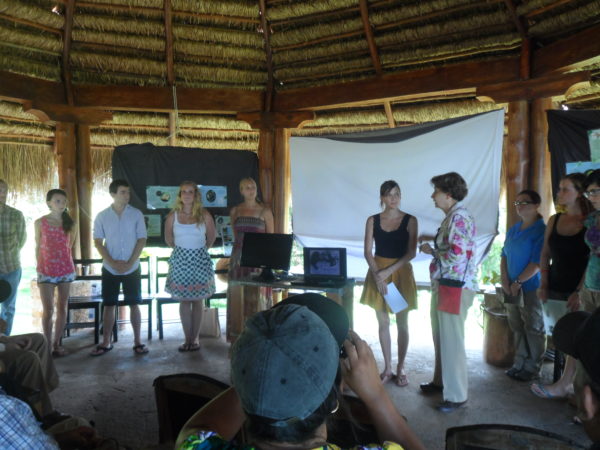Batipa Field Station (BFS) can integrate academic courses and facilitate research opportunities and related projects through tours, conferences, workshops so that, students enrolled in academic programs, may acquire the skills to understand the ecology within tropical ecosystems and interact sustainably with their surroundings. Panama western region (Chiriqui’), is one of the most biologically diverse and productive regions of the world, therefore, BFS is one of the best places to study biodiversity in Panama. The tropics of are extraordinary bioregions, covering only 7% of our land mass. They are home to more than 50% of all terrestrial species. Having such rich biodiversity, one might think that the tropics are resistant to disturbance. In reality, these bioregions are extremely sensitive to stressors such as soil erosion, which is caused by farming and deforestation. BFS’s current sustainable conservation and management projects employ approaches to foster habitat conservation, while supporting sustainable means of living within the local community.
Some students’ activities are planned in Gualaca Altitudinal Biological Corridor and BFS is part of this. The strategies suggested for the conservation objectives have been already identified as a priority and these are pursued in collaboration with native people who inhabit Chiriqui’. The Gualaca Corridor for example, embraces parts of the Chiriqui’ region, which includes the Gulf of Chiriquí National Park, the Pacific Ocean and the Mesoamerican Corridor, thus connecting to the rest of Central America, the Caribbean Sea and the Pacific Panamanian coast. Deforestation is occurring in the Gualaca Corridor at an alarming rate, as well as in the Mesoamerican corridor. That is why, urgent actions must be taken to correct current impact patterns, into a more sustainable approach to land management and development. It is important that our visitors experience this situation and contribute to look for solutions to on-going efforts aimed at protecting the territory and its many native habitats.
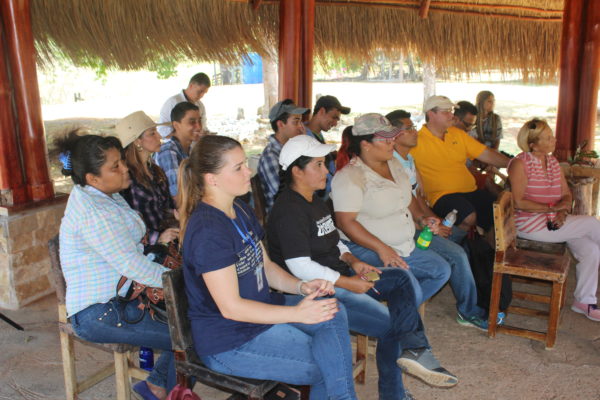
ECOTOURISM AT BFS
Guided tour to Batipa Field Station (BFS)
The typical tour at BFS includes a visit to all its feature areas (teak fields, cattle in silvopasture, wildlife areas and associated ecological corridors, leading to the mangrove habitat, vegetables and fruit garden). Visitors will learn how an integrated management approach founded on agroecology theory and practices benefits a conservation of biodiversity, while maintaining the economic viability of the Institute. We offer different tour options, and these are:
AGROECOLOGY TOUR I
Tour time: 7 hours from 8:30am to 3:30pm
Geographical location:
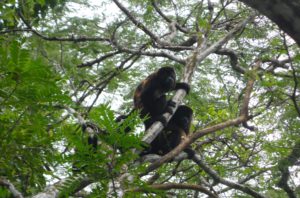
The agroecology tour includes a visit to (one or two per day):
1) The teak (Tectonia grandis) plantation, which consists in a hike through the reforested areas where teak trees of different ages are grown. Visitors will be able to walk through the tree’s canopy to observe understory species that permanently cover the soil to protect it, from erosion. You will learn also how teak is grown (cultivated, propagated, etc.) throughout the harvesting of the timber.
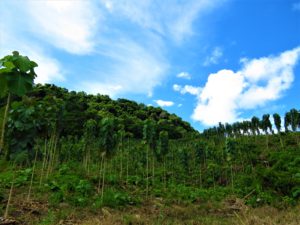
2) The visit to the silvopasture systems is where teak trees are associated with agricultural and fodder crops. This tour will enable visitors to learn the interactions occurring in these systems among all these different species (trees, cattle, herbaceous plants). This integrative management approach fosters biological diversity and rewards BFS through a variety of ecological services that translate into a viable economics for the Institute.
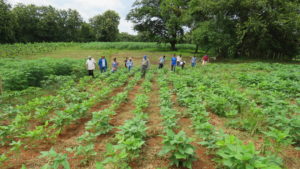
3) Howler monkeys (Alouatta spp.) inhabit the wildlife areas that encroach with the cultivated fields, thus, facilitating their sighting while hiking, or driving through the land. The reintroduction of iconic, tropical bird species like the Red Macaw (Ara macao, L.), is pursued by reintroducing couples of adult birds and monitoring their reproduction, while restoring their habitat with native trees and plants, that will enhance their establishment at BFI. Visitors will have the opportunity to learn the species’ reproductive cycle and BFS’s efforts to foster its reintroduction. For howler monkeys’ conservation works, BFI partners with a regional plan called “Primates Project”.
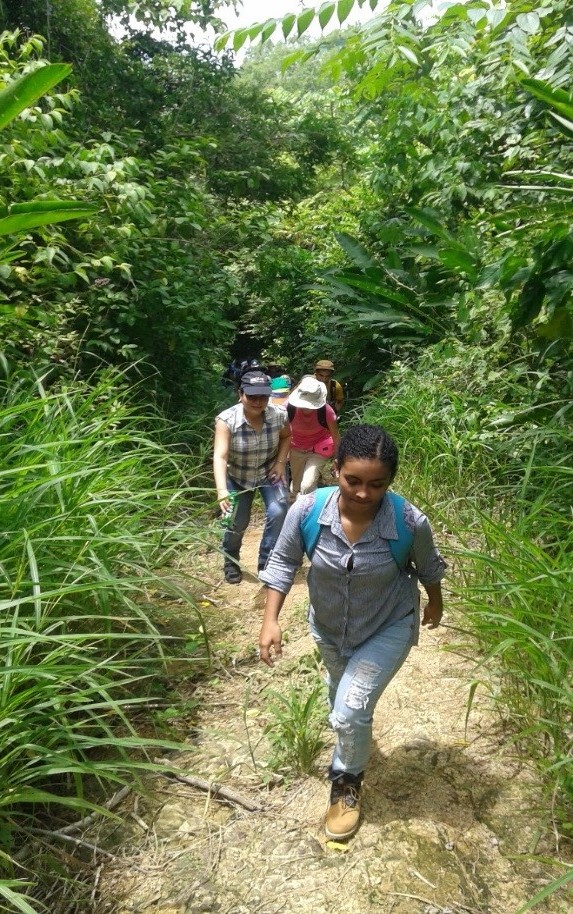
ECOLOGICAL CORRIDORS
Tour time: 6 hours from 8:30am to 2:30pm
Geographical location:
The Ecological Corridors tour includes a visit to:
– Visit to GUALACA Altitudinal Biological Corridor. This is an on-going effort to increase the connectivity of remnant wildlife habitats within and beyond the borders of BFI. You will visit locations where ground and above-ground corridors along the Inter-American Highway have been constructed to facilitate wildlife movement through remnant, wildlife patches. During this tour you will be engaged in a friendly conversation about the importance of connectivity for Gualaca Altitudinal Biological Corridor. You will be presented by the tour guide the challenges and also the opportunities affecting this project in an effort to protect the endemic fauna. Here visitors can contribute to this project by planting native tree seedlings, to increase the above mentioned, connectivity.
This tour includes also a visit to a selection of corridors within BFS, where wildlife moves across the BATIPA peninsula. Visitors will be able to learn the importance of reconstructing internal corridors and what plant species are employed in this effort. Visitors will be engaged in hands-on activities, which include: tree seedlings maintenance (sowing, pruning, assessing their quality) and transplanting in the corridor areas.
Additional options on this tour:
1) Visit to ENEL FORTUNA hydroelectric dam:
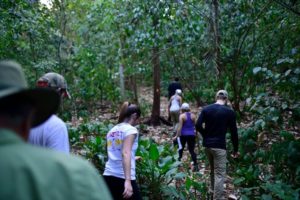
– Typical breakfast on the way to Gualaca
- Visit to livestock agricultural and touristic activities in the zone
– Stop at Horizonte hotel to observe their domestic animals farm
– Stop at Quijada del Diablo. The summit of the hill
- Visit to the ENEL Fortuna dam at Fortuna Forest Reserve:
– Visit to the dam information center, stopper and spillway
– Visit to the ENEL Fortuna control and turbine room
- A delicious lunch at the cattle track in Gualaca, where visitors can taste the typical food of this livestock region (patacones).
- Free time at La Barqueta beach. The purpose is to experience the coastal ecosystem in the Gulf of Chiriqui, while enjoying the sunset on the beach and tasting sea food.
AGROECOLOGY TOUR – II
Tour time: 6 hours from 8:30am to 2:30pm
Location:
This tour will consider:
1.Visit to the BFI orchard, which is a demonstration of sustainable agricultural practices managed in association with the teak production fields. Visitors will be engaged in various operations regarding the management of cultivated crops (from sowing to harvesting). Visitors will also learn the strategies adopted in the to reduce erosion. Visitors will be introduced to the manufacturing of manure-based fertilizers, or bioles, which are organic fertilizers derived from anaerobic digestion process of organic animals and vegetables remains. Bioles are used also at BFI as an ecological alternative for pest control.
- Visit to the native plant species grown in the greenhouse. These are consumed by local wildlife and enrich the diversity of Gualaca Altitudinal Biological Corridor. Visitors will be able to collect propagules, multiply them, or work together in the transplanting process. This activity will remain as evidence of your cooperative work and contribution to the ecological restoration works at BFI.
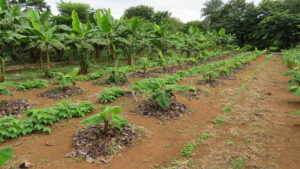
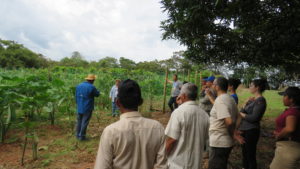
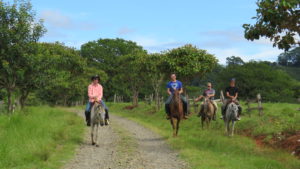
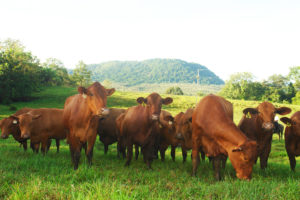
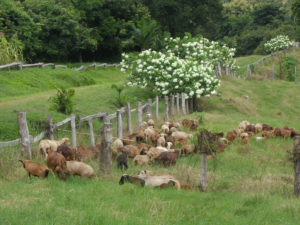
SILVOPASTURE SYSTEM HORSEBACK RIDE
Tour time: 6 hours from 8:30am to 2:30pm
Location:
This tour will specifically expose visitors to cattle raising and reproduction at BFI. The breed SENEPOL constitutes the breed of choice here because it is tolerant to the humid and hot conditions of the tropics. The cows are raised in a silvopasture system in rotation, which appeared to have been very successful to maintain the overall health and overall body condition of the animals. This tour will include also a visit to the Reproduction Lab where cattle gametes (including embryos) can be stored for sale, or for instruction to students enrolled in the Master program on Bovine Reproduction.
INFORMATION.
For every tour, lunch could be held at Los Cabimos, which is property of BFI, in Bahía de los Muertos, located in the Gulf of Chiriquí, where visitors can experience this corner of the Pacific coast, with its pristine mangroves and quiet waters. During a low tide the intercoastal zone is accessible for those interested in exploring this unique, intertidal ecotone. Only a few steps away, Los Cabimos offers facilities (dining room, bedrooms, toilets and showers) available for overnight lodging, conferences and outdoor recreation activities (kayaking, hiking).
Tours include:
-An official Spanish & English-speaking BATIPA tour guide
-For maximum comfort and protection of our guests visiting BFI we suggest you to:
- Wear proper clothing like comfortable jeans, boots, long-sleeved shirt or T-shirts, hat, or cap, sunglasses
- Mosquitoes repellent and sunscreen
- Bring plenty of water and snacks





